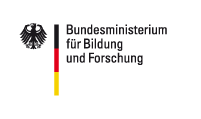General information
- Project partners:
- University of Ulm, Institute for Solid-State Physics, Prof. Paul Ziemann
- Lomonosov State University Moscow, Institute for Physics of Polymers and Crystals, Prof. Alexei Khokhlov
- Project period: 01/01/2010 - 30/04/2013
The aim of the project is to integrate Russian scientists into a “Centre for energy materials” at the University of Ulm by setting up an “Institute for Energy-Relevant Nanomaterials” (IAERN) lead by Professor Alexei Khokhlov (Lomonosov University, Moscow, and Russian Academy of Sciences). The foundation of the “Helmholtz Institute Ulm” on the university campus in 2011 with a focus on “electrochemical principles of energy storage” has contributed to the institutional anchoring of the project. The new IAERN institute was officially established at the start of 2012.
This structural aim is embedded in a research project with a focus on the development of optimised materials for energy generation and storage. In this way, the project is to contribute to the development of a future-oriented energy supply. Nanomaterials for energy applications such as fuel cells, solar cells and lithium-ion batteries are to be researched and optimised through theory, experimentation and computer simulation. To increase the effectiveness of development work, “multiscale modelling” of materials is to be increasingly used. The theoretical possibilities of this approach have only recently been developed and the Russian partners are applying their internationally recognised expertise to achieve its implementation. Involved in the scientific issues of the project are physicists and chemists from Ulm and Moscow, performing both theoretical and experimental work.










